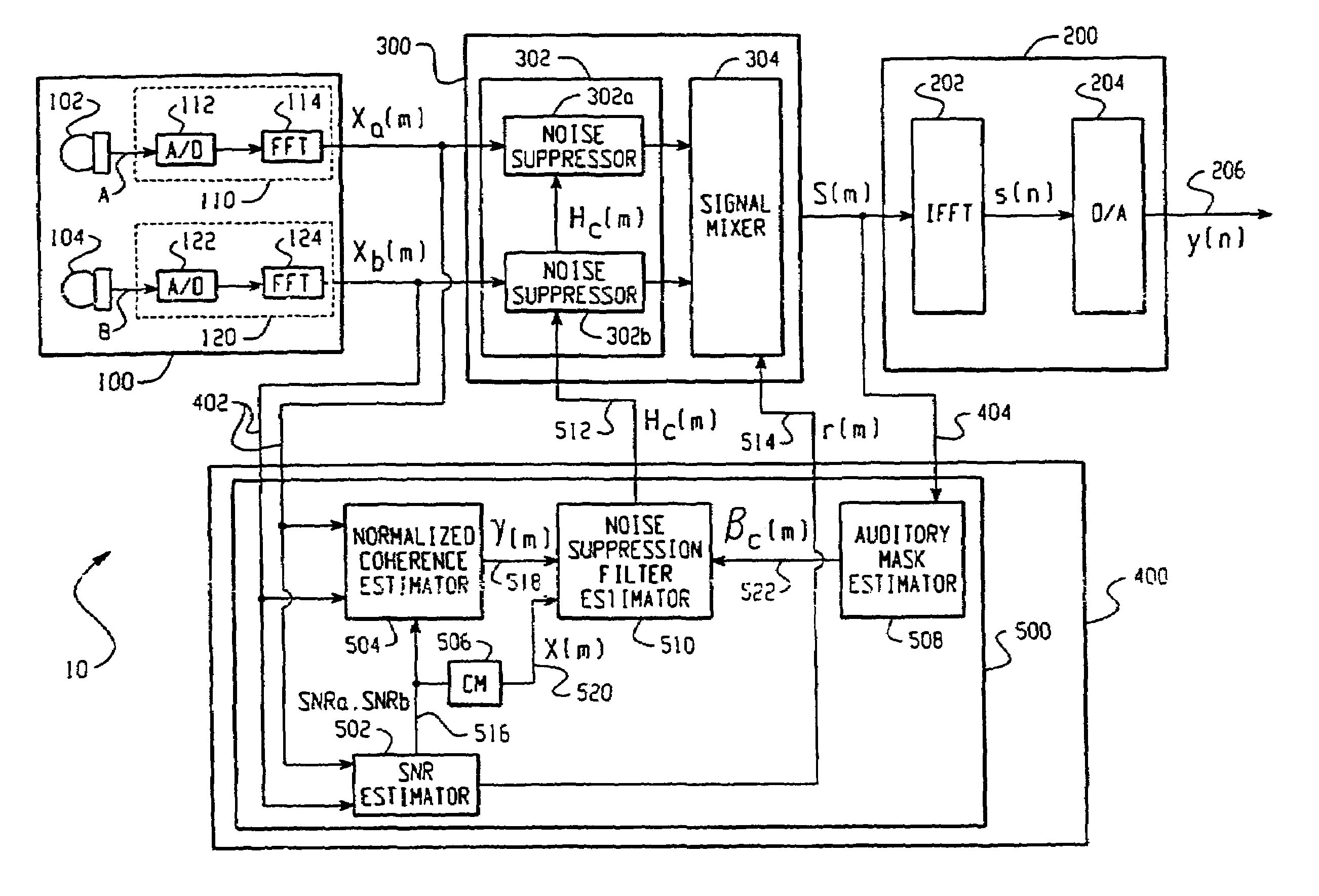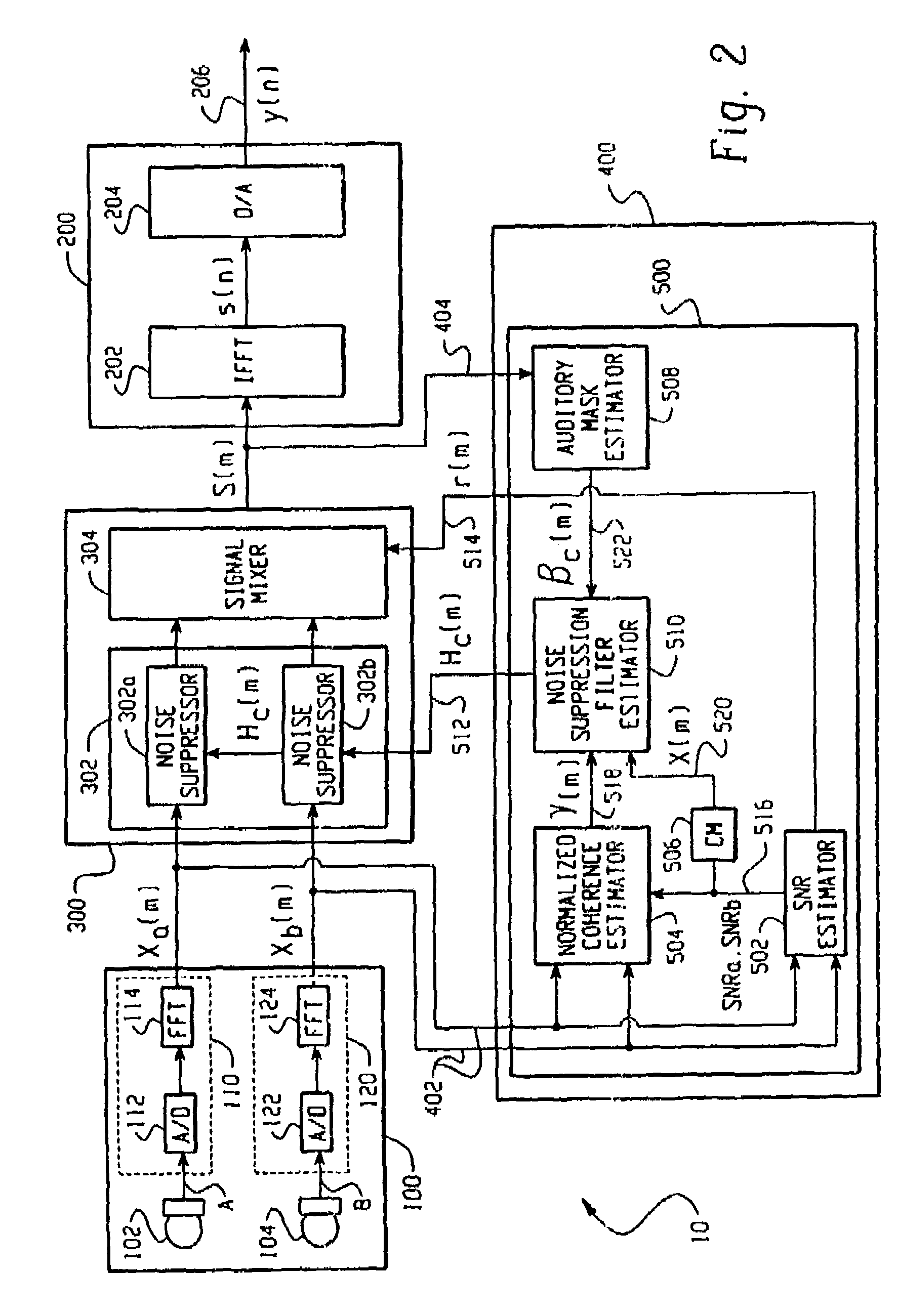Noise suppression circuit for a wireless device
a wireless device and noise suppression technology, applied in the field of voice coding, can solve the problems of incoherent noise signals of current products, performance degradation of ambient noise, and serious obstacles to the development of acceptable solutions of ambient noise, and achieve the effect of suppressing incoherent noise signals
- Summary
- Abstract
- Description
- Claims
- Application Information
AI Technical Summary
Benefits of technology
Problems solved by technology
Method used
Image
Examples
Embodiment Construction
[0013]Turning now to the drawing figures, FIG. 1 sets forth a preferred embodiment of an adaptive noise suppression system (ANSS) 10 according to the present invention. The data flow through the ANSS 10 flows through an input converting stage 100 and an output converting stage 200. Between the input stage 100 and the output stage 200 is a filtering stage 300 and an analyzing stage 400. The analyzing stage 400 includes a feed-forward path 402 and a feedback path 404.
[0014]Analog signals A(n) and B(n) are first received in the input stage 100 at receivers 102 and 104, which are preferably microphones. These analog signals A and B are then converted to digital signals Xn(m) (n=a,b) in input converters 110 and 120. After this conversion, the digital signals Xn(m) are fed to the filtering stage 300 and the feed-forward path 402 of the analyzing stage 400. The filtering stage 300 also receives control signals Hc(m) and r(m) from the analyzing stage 400, which are used to process the digit...
PUM
 Login to View More
Login to View More Abstract
Description
Claims
Application Information
 Login to View More
Login to View More - R&D
- Intellectual Property
- Life Sciences
- Materials
- Tech Scout
- Unparalleled Data Quality
- Higher Quality Content
- 60% Fewer Hallucinations
Browse by: Latest US Patents, China's latest patents, Technical Efficacy Thesaurus, Application Domain, Technology Topic, Popular Technical Reports.
© 2025 PatSnap. All rights reserved.Legal|Privacy policy|Modern Slavery Act Transparency Statement|Sitemap|About US| Contact US: help@patsnap.com



